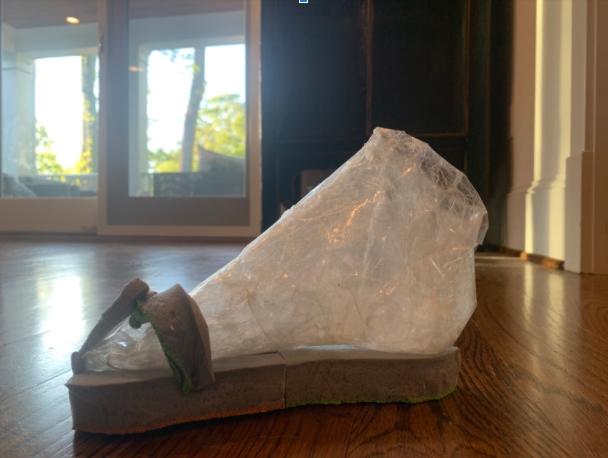Taylor Swift famously wrote her 2010 pop-country ballad “Dear John” about her painful breakup with ex-beau John Mayer. She developed lyrics and tone from the experience she had within the relationship and transformed it into art. The song, though particular to her unique situation, delivered an air that could be felt by anyone who has ever gone through a breakup. By transforming her experience into a language that masses could identify with, Taylor Swift created one of the most relevant tracks of her career.
This is the case for many artists—their best and most successful works of art come from their own lived experiences. It is how they convey them that allows the rest of the world to connect to and live the experiences with them.
In the age of the COVID-19 pandemic, this begs the question of what creative content will look like throughout the next few months. As everyone in the world navigates the repercussions of the airborne virus, stay at home mandates, panic, fear, and boredom simultaneously, it is questioned if the substance of art will universally revolve around this theme.
As early as the 1400s when the world was grappling with mass illness due to the Black Plague, composers were artistically responding to tragedy. During this time, Englishman John Cooke composed a hymn titled Stella celi structured around the pandemic using language like “ulcers” and “terrible death” to convey the severity and brutality of the situation.
This has happened over and over again; with each pandemic, artists respond by creating content as a form of comfort. Johann Sebastian Bach composed his Cantata No. 25 (“There is Nothing Healthy in My Body”) just a year after the great plague of Marseilles. John Corigliano wrote his Symphony No. 1 (“AIDS Symphony”) as an open-heart elegy to all of the pain he felt, losing friends to the AIDS epidemic. Now, artist Lisa Bielawa is putting together an emotional choral response to the CoronaVirus pandemic.
In this uncertain time artists are turning towards their craft in order to manufacture a sense of comfort. By using a creative medium to evoke emotion from others and portray to the world that most people are on the same page, the style of art being distributed to the masses looks much different than it has in a while.
People are creating and appreciating art in a much more accessible and interactive way. Gal Gadot compiling three minutes of celebrities singing “Imagine” may not have resonated with everyone, but on a content level, it was a unique form. This “multiple point-of-view” perspective on creation is becoming increasingly common among artists, especially in a time where their only public access point is through social media.
Fashion and designer behind the Instagram account @merrell_1trl incited a fashion project in which people stuck in their homes due to the Corona Virus could showcase their creative energy in a competition to create a shoe. The basis of the project was for people to collect everyday items they had laying around and transform them into a fashionable art form. Instagram users were submitting photos using everything from USPS packaging to iPod Nanos to used wine corks to construct their shoes. This artist was inspired by their circumstances and their content reflects the sense of community that derives from universal experience.

A flip flop and plastic foot I made out of sponges and boredom. (Photo by: Halle Rudolph)
Because humans are inherently social beings and they innately need interpersonal contact in order to survive, it makes sense that the influence of others has an impact on the creative content people produce. In this time where social contact is limited, it is interesting to see the ways in which artists are able to find it. The fashion project where designers were able to communicate through Instagram shows how artists are able to not only be influenced by the pandemic in terms of content (using materials that they would have taken for granted if not for the pandemic), their newfound emphasis on collaboration shines through in many newly created art projects as well.
Singers and songwriters are finding a way to create something new through this now prevalent idea of collaboration, many teaming up to make remixes. Beyoncé and Meghan Thee Stallion worked together to create a reprised version of Meghan’s hit song “Savage.” The two are donating all proceeds from their new song to organizations working to fight the spread of COVID-19.
This pandemic is different than ones of the past, as humans now have more immediate ways of contact when the rest of the world is shut off. Unlike Cooke and Bach, artists can reach out to each other and work with one another to create art that doesn’t have to be exactly reflective of the tragic time they are living through. Art will always be a direct result of circumstance. This can be seen from the past and will continue to be seen in the future; how artists choose to convey circumstance, remains an exciting anticipation.
This piece was written for the class Alternative Journalism, which is taught by Kelley Crawford at Tulane University. The ongoing series, “Coping with Corona” is a live curriculum project where students investigate and report on the missed angles of Coronavirus coverage.
 NOLAbeings
Multimedia artist Claire Bangser created NOLAbeings as a portrait-based story project that marries...
NOLAbeings
Multimedia artist Claire Bangser created NOLAbeings as a portrait-based story project that marries...
 Data corner: Adobe Suite (create a PDF, social media graphic, presentation, edit a photo and video
Data corner is where you go to work with analytics and top tech skills. It takes on everything from PERL and SQL to Canva and Sprout Social.
Data corner: Adobe Suite (create a PDF, social media graphic, presentation, edit a photo and video
Data corner is where you go to work with analytics and top tech skills. It takes on everything from PERL and SQL to Canva and Sprout Social.
